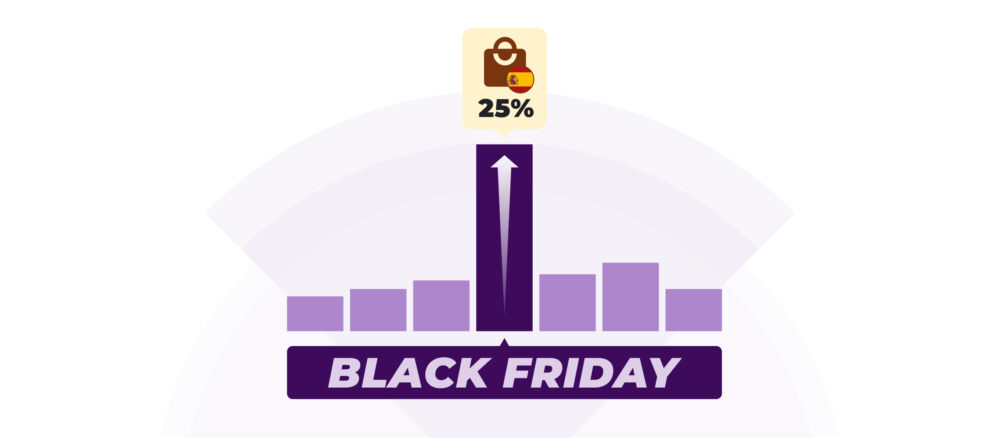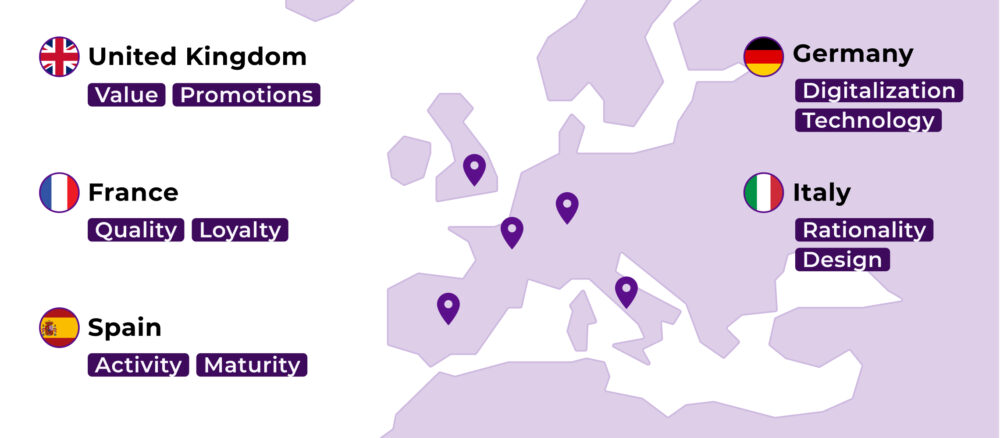Black Friday 2025: One in Four Online Purchases in Spain is Made in a Single Week
Black Friday is once again confirmed as the fundamental pillar of the digital commercial calendar in Spain. In 2025, this event will concentrate almost 25% of all annual online sales. Marketplaces such as Amazon, El Corte Inglés, AliExpress and TikTok Shop will lead in user acquisition and digital traffic.
The Spanish preference for the online channel is becoming increasingly noticeable: in the first quarter of 2025 alone, national e-commerce grew by 18.2% year-on-year, reaching a turnover of 25,752 million euros according to the CNMC.
Consumption Patterns and Black Friday Growth
During the 2024 campaign alone, the average spend per shopper during Black Friday amounted to €230. Furthermore, the online average purchase ticket is forecast to exceed €485 in 2025, representing a 6.5% increase compared to the previous year.
Spanish e-commerce will close 2025 with an estimated volume of 45,062 million euros, 4.8% more than last year. This signals stability and maturity in the Spanish digital market.
Generation X leads spending and purchase frequency, with an average of 11.8 transactions per user in the last twelve months and an annual spend exceeding €345.6. The sectors recording the greatest dynamism in online sales are beauty, personal care, home and pets. On the other hand, automotive accessories and food show growth exceeding 4%.
Strategies and Challenges for Brands and Marketplaces
Omnichannel integration and dynamic forecasting allow retailers to maintain sustained growth. The use of artificial intelligence and predictive models helps reduce stockouts and optimise price campaigns, which is especially crucial for maximising results during Black Friday.
As pointed out by Jordi Vilardaga, Head of Supply Chain at NTT DATA, in the “Black Friday 2025 Report”:
Click & collect, vertical marketplaces and live shopping continue to gain traction and drive the national market. Luis Simoes, Managing Director Iberia at NIQ, highlights that:
Cyber Monday and the “Cyber Week” Revolution
Cyber Monday is gaining weight in Spain. In 2025, the average ticket is expected to reach €300 per online shopper according to Webloyalty forecasts. In some categories, the average spend of Black Friday will be exceeded for the first time. 77% of users already plan to take advantage of offers on Cyber Monday. This consolidates an extended window of discounts and digital opportunities, favouring a combined growth of 10% in online sales between both campaigns.
The fastest growth is seen in technology, fashion and food products, which lead transaction volumes in both events. Furthermore, Spain will reach an 11.2% online retail share this year, a reflection of digital maturity and the rise of digital commerce among traditional operators too.
A Common Trend, Multiple Ways to Shop
The rise of Spanish e-commerce translates into an international projection: currently, the country is the fifth largest market worldwide (behind the USA, Germany, Brazil and the UK) in sales volume during Black Friday, with a 6.3% global share.
More than 90% of consumers in developed countries consider the 5 days between Black Friday and Cyber Monday as key dates in the commercial calendar. However, the way this phenomenon is experienced varies significantly according to the culture and expectations of each country. While in the United States the event is associated with the start of Christmas shopping and massive offers both in physical stores and online, in Europe Black Friday reflects differentiated consumption strategies, where value, quality and digitalisation coexist in different proportions.
Source: Black Friday 2025: The impact of intelligent retail – NTT Data, November 2025
United Kingdom
The British market is highly price-oriented, with consumers seeking convenience and aggressive promotions, especially in fashion, toys and electronics. Comparison between shops and early purchasing set the tone for British digital consumption.
France
The French public prioritises quality and the after-sales experience, maintaining great loyalty towards brands. The dominant categories are beauty, fashion and home, in a demanding commercial environment marked by excellence.
Spain
Spain figures among the most active countries in Europe, with digitally mature and highly participatory consumers. The main categories during BFCM are fashion, footwear and beauty, supported by the strong growth of online sales and purchase planning to anticipate the Christmas campaign.
Germany
The German market is distinguished by its organisation and advanced digitalisation, with high use of artificial intelligence in the purchasing process. Electronics, home and fashion are the star categories, showing a rational, planned and efficient customer profile.
Italy
The Italian consumer stands out for their rationality and taste for design, guided by technology and a preference for stylish items. Online shopping plays a leading role, especially in electronics and fashion.
United States
In the USA, the “Cyber Five” sets records in sales and participation, aligning the nation’s omnicanal experience—the most consolidated in digital consumption—with the rise of social commerce and constant innovation from giants like Amazon and Walmart.
A Campaign that Redefines the Digital Commercial Calendar
Black Friday and Cyber Monday are no longer simple promotional milestones, but authentic engines of digital consumption on a global scale. In Spain, their role is particularly decisive. They concentrate a substantial part of the annual online sales volume, accelerate the adoption of new technologies and consolidate consumers as informed, demanding and fully digital actors.
The maturity of e-commerce, together with the growing sophistication of brands, retailers and marketplaces, draws a scenario in which precision, anticipation and the omnichannel experience will be key to competing in 2025 and beyond. In a context marked by constant comparisons, the search for value and increasingly rational decisions, those who know how to interpret data and adapt with agility will capture an essential part of the demand.
Ultimately, Black Friday and “Cyber Week” will continue to redefine the commercial calendar, consolidating themselves as a peak season for global commerce and a decisive showcase where digital consumer loyalty is measured and won.





